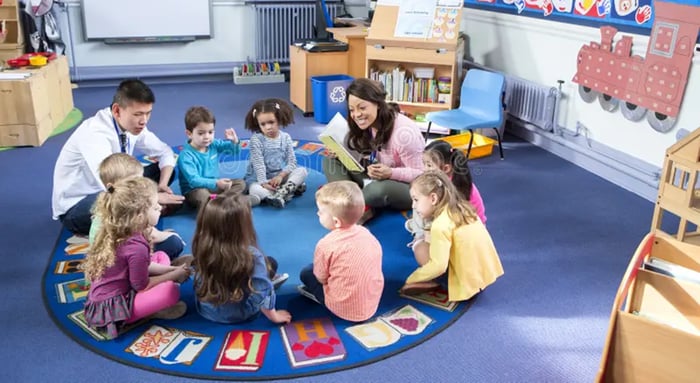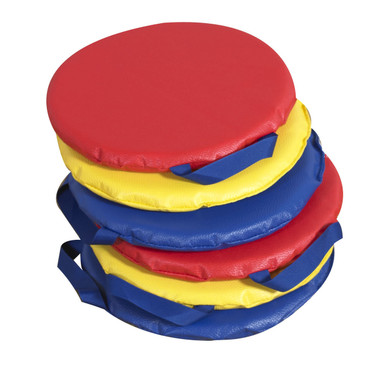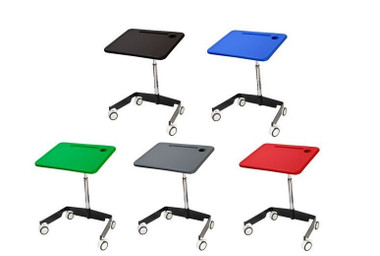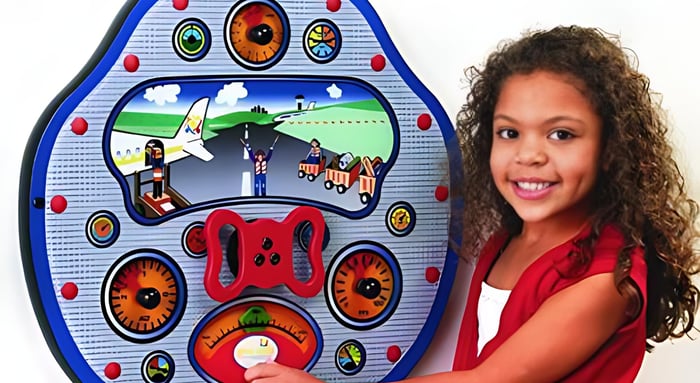
Circle Time Seating vs Individual Desks for Early Learning
Table of Contents
- Early childhood educators often debate whether circle time seating or individual desks work better for young learners. But studies reveal that children who experience both arrangements develop significantly different skill sets—and the timing of when to use each one matters more than you'd think.
- Key Takeaways
- Circle Time Seating vs Individual Desks: Each Serves Distinct Learning Goals
- How Circle Time Builds Social Skills
- Individual Desks: Supporting Focused Learning and Independence
- Age-Appropriate Implementation: 12 Months to Pre-K
- Classroom Management: When Each Seating Style Works Best
- Extending Circle Time Success: Proven Strategies
- Both Seating Styles Are Necessary for Complete Early Learning Development
- FAQs
Early childhood educators often debate whether circle time seating or individual desks work better for young learners. But studies reveal that children who experience both arrangements develop significantly different skill sets—and the timing of when to use each one matters more than you'd think.
Key Takeaways
- Circle time seating builds social skills like turn-taking and empathy, while individual desks support focused learning and independence
- Age-appropriate implementation ranges from 3-10 minute flexible sessions for toddlers to 15-20 minute structured periods for preschoolers
- Strategic classroom management combines both seating styles to optimize different learning activities and accommodate diverse student needs
- Proven strategies help extend circle time success, including gradual duration increases and alternating active with quiet activities
Early childhood educators face a fundamental question about classroom setup: should young learners gather in circle time or sit at individual desks? The answer isn't either-or—both seating arrangements serve distinct educational purposes that complement each other in creating optimal learning environments for toddlers through pre-kindergarten students.
Circle Time Seating vs Individual Desks: Each Serves Distinct Learning Goals
Circle time seating and individual desks function as educational tools designed for different learning objectives. Circle time promotes social-emotional development, encourages group participation, and builds classroom community. Individual desks support concentrated work, minimize distractions, and foster personal responsibility. Understanding when and how to implement each arrangement creates a balanced learning environment that addresses various developmental needs.
Studies indicate that circle time promotes key areas of development including social-emotional, physical, cognitive, and language skills through structured group interaction. Meanwhile, individual desk arrangements allow teachers to modify the learning environment to best suit their instructional goals, fostering an environment that supports both traditional and student-centered learning approaches. Little People's Cove recognizes that effective early learning environments strategically combine both seating styles to maximize educational outcomes.
The decision between circle time and individual desks depends on learning objectives, student ages, and specific activities planned. Rather than choosing one arrangement permanently, successful early childhood programs transition between both styles throughout the day to meet diverse learning needs and maintain student engagement.
Sit-Arounds Floor Seating Cushions, Rainbow - Set of 6

$114.95
Make story time and floor activities extra cozy with our Rainbow Sit-Arounds Floor Seating Cushions. These vibrant cushions are designed to provide maximum comfort for students during...… read more
How Circle Time Builds Social Skills
Circle time seating creates a shared space where children develop social competencies that prepare them for future academic success. This seating arrangement naturally encourages interaction, communication, and emotional growth through structured group activities.
1. Turn-Taking and Listening Skills Development
Circle time seating helps children practice turn-taking, learn respect for others' opinions, and understand the need for rules, preparing them for kindergarten success. The circular arrangement ensures every child can see and hear their peers, creating equal opportunities for participation. Children learn to wait patiently while others speak, raise hands appropriately, and respond thoughtfully to questions and discussions.
This structured environment teaches active listening skills as children focus on speakers without the distractions present in other seating arrangements. The visual connection between all participants helps children read facial expressions and body language, enhancing their communication abilities beyond just verbal skills.
2. Community Building and Emotional Safety
Circle time encourages unity, respect, turn-taking, and working together towards a shared vision. The inclusive seating arrangement creates a sense of belonging where every child feels valued and heard. This emotional safety net encourages shy children to participate while teaching more outgoing children to make space for quieter peers.
The community aspect of circle time builds trust between students and teachers, creating an environment where children feel comfortable sharing thoughts, feelings, and experiences. This foundation of emotional security improves overall learning readiness and classroom cooperation throughout the day.
3. Empathy Through Shared Experiences
Circle time helps children develop empathy by understanding different perspectives and emotions through group discussions and shared experiences. When children listen to peers' stories, respond to literature together, or participate in group problem-solving, they learn to consider viewpoints beyond their own.
These shared moments create opportunities for children to practice compassion, offer comfort to upset classmates, and celebrate each other's achievements. The collective nature of circle time activities fosters emotional intelligence that extends beyond the classroom setting.
Individual Desks: Supporting Focused Learning and Independence
Individual desk arrangements provide the structure needed for concentrated work and independent skill development. This seating style creates personal learning spaces that minimize distractions while encouraging self-direction and responsibility.
1. Concentration Without Peer Distractions
Individual desks promote focused, independent work, ideal for tasks requiring concentration and minimal distraction. The physical separation between students reduces side conversations, visual distractions, and the temptation to engage with neighbors during work time. This arrangement particularly benefits children who struggle with attention or become overwhelmed in group settings.
Teachers can strategically place students who need additional support closer to instructional areas while positioning easily distracted children in quieter classroom zones. This flexibility in desk placement allows for personalized learning environments within the same classroom space.
2. Personalized Learning Environments
Individual desks allow teachers to tailor seating arrangements for specific attention needs and learning styles. Each desk becomes a personal workspace where children can organize materials, display work, and develop organizational skills. This personalization helps children feel ownership over their learning space and encourages responsibility for their belongings.
The individual nature of desk arrangements also supports different learning paces, allowing advanced students to work ahead while providing struggling learners with additional time and space to master concepts without peer pressure or comparison.
3. Building Personal Responsibility
Individual desks foster personal responsibility and ownership of workspace and materials. Children learn to maintain their desk area, organize supplies, and manage their belongings independently. These life skills transfer beyond academic settings, preparing children for increased responsibility as they advance through school.
The individual desk arrangement teaches children to work independently, follow directions without constant supervision, and take pride in their personal workspace. These self-management skills become increasingly important as children progress through their educational journey.
Age-Appropriate Implementation: 12 Months to Pre-K
Successful implementation of both seating styles requires understanding developmental stages and adjusting expectations accordingly. Different ages benefit from varying durations, structures, and activity types within each seating arrangement.
Toddlers (12-24 months): 3-10 Minute Flexible Sessions
Toddlers benefit from brief circle time sessions lasting 3-8 minutes with songs, simple stories, and movement activities. Participation should remain optional, allowing children to move in and out of the group freely as attention spans vary significantly at this age.
Individual work for toddlers involves very short activities at low tables or floor spaces rather than traditional desks. Activities might include simple puzzles, stacking toys, or coloring, with sessions lasting just a few minutes before transitioning to other activities.
Preschoolers (3-5 years): 15-20 Minute Structured Learning Time
Preschoolers can handle circle time sessions lasting 15-20 minutes, incorporating structured stories, social-emotional lessons, and academic concepts. Group participation and turn-taking become more emphasized, though the focus remains on interaction rather than sustained sitting.
Individual desk work for preschoolers can extend to 15-20 minutes, including writing practice, worksheets, art projects, and manipulative activities. Children this age benefit from clear boundaries and expectations while still needing frequent breaks and activity changes.
Classroom Management: When Each Seating Style Works Best
Effective classroom management involves knowing when to implement each seating arrangement for maximum educational benefit. Strategic timing and activity matching optimize learning outcomes while maintaining student engagement.
Circle Time for Group Activities and Social Learning
Circle time seating works best for morning meetings, story reading, group discussions, songs, and social-emotional learning activities. This arrangement excels when the goal involves community building, shared experiences, or activities requiring group interaction and participation.
Use circle time for introducing new concepts that benefit from group discussion, celebrating achievements, problem-solving classroom issues, and activities involving movement or music that engage multiple children simultaneously.
Individual Desks for Testing, Quiet Work, and Focused Workstations
Individual desks work best for testing, quiet work periods, independent practice, and activities requiring sustained concentration. This arrangement supports tasks like writing practice, detailed art projects, puzzles, and any activity where peer interaction might interfere with learning objectives.
Choose individual desk arrangements when children need to demonstrate independent mastery, work at different paces, or engage in activities requiring personal space and materials organization.
Flexible Arrangements for Mixed Learning Styles
Flexible seating arrangements support diverse learning styles and allow for transitions between individual work, small group collaboration, and whole-class instruction. Some children learn better in collaborative environments while others need quiet, independent spaces to thrive.
Consider offering choice in seating arrangements when possible, allowing children to select the environment that best supports their current learning needs while teaching them to make appropriate choices for different activities.
Kids Ergonomic Sit-Stand Mobile Student Desk

$523.92
This is the future of classrooms! The Kids Ergonomic Sit-Stand Mobile Student Desk helps harness focus, improve posture and boost energy. These desks enhance concentration levels....… read more
Extending Circle Time Success: Proven Strategies
Successful circle time implementation requires specific strategies that maintain engagement while gradually building children's attention spans and participation skills.
1. Start Short and Build Duration Gradually
Begin with short circle time sessions—just a few minutes—and slowly extend duration as children gain stamina and interest, staying responsive to group attention spans. Children can typically focus for one to three minutes per year of age for non-preferred tasks, so three-year-olds might handle three to nine minutes of concentrated attention depending on the activity.
Monitor group engagement levels and end circle time before children become restless or disinterested. Successful short sessions build positive associations that make longer sessions more achievable over time.
2. Alternate Active and Quiet Activities
Mix high-energy movement or songs with quiet listening activities, stories, or hands-on experiences. Allow standing and stretch breaks between segments to avoid restlessness and reengage attention. This alternating pattern accommodates different learning styles and energy levels within the same session.
Plan circle time with a variety of activity types, ensuring that no single type of engagement continues too long. Balance listening activities with participation opportunities and quiet moments with movement breaks.
3. Use Props and Visual Elements
Integrate puppets, tactile objects, visual aids, and show-and-tell items to keep circle time interactive and stimulate multiple senses. Props help maintain attention, illustrate concepts, and provide hands-on learning opportunities that appeal to different learning styles.
Visual elements like picture cards, felt boards, or interactive displays help children follow along with stories and lessons while providing concrete references for abstract concepts.
4. Establish Consistent Routines and Clear Expectations
Use consistent opening and closing songs, visual cues, and small rituals so children know what to expect, fostering security and building their ability to transition calmly. Predictable routines reduce anxiety and help children feel confident participating in circle time activities.
Establish clear, simple expectations for circle time behavior and consistently reinforce these guidelines through positive reinforcement and gentle reminders. Children thrive when they understand boundaries and expectations.
Both Seating Styles Are Necessary for Complete Early Learning Development
Circle time seating and individual desks each contribute unique benefits to early childhood education that cannot be replicated by the other arrangement. Circle time builds social skills, emotional intelligence, and community connections that prepare children for collaborative learning throughout their educational journey. Individual desks develop focus, independence, and personal responsibility that support academic achievement and self-directed learning.
The most effective early childhood programs strategically implement both seating styles, transitioning between arrangements based on learning objectives, student needs, and activity requirements. This balanced approach ensures that children develop both social competencies and independent work skills necessary for school success.
Rather than viewing these seating arrangements as competing options, successful educators recognize them as complementary tools in their educational toolkit. The key lies in understanding when and how to implement each style to maximize learning outcomes while supporting children's developmental needs at every stage.
| Aspect | Circle Time Seating | Individual Desks |
|---|---|---|
| Focus | Group engagement, social learning | Independent work, concentration |
| Interaction | High: encourages communication and sharing | Low: limited peer interaction |
| Classroom Community | Strengthens sense of belonging | Less emphasis on group cohesion |
| Ideal Activities | Songs, stories, discussions, group games | Writing, puzzles, worksheets |
| Behavior Management | Requires calm, respectful participation | Easier control, fewer distractions |
| Learning Style Support | Supports oral language and social skills | Supports visual and kinesthetic tasks |
For early childhood education furniture resources and expert guidance on creating optimal learning environments, visit Little People's Cove.
FAQs
What happens during circle time and why is it important?
During circle time, children and teachers gather together in a circle to share structured group activities such as songs, stories, discussions, show-and-tell, calendar or weather routines, and movement games. It provides a consistent daily routine that helps children develop listening skills, turn-taking, and respect for others’ ideas, while also reinforcing academic concepts like counting, days of the week, and language development. Circle time is important because it builds a sense of community, strengthens social-emotional skills, encourages participation, and creates opportunities for children to feel included and connected. It also helps teachers observe group dynamics and guide children in practicing focus, cooperation, and self-regulation.
How can teachers keep children focused and involved during circle time?
Teachers can keep children focused during circle time by keeping sessions short and consistent, using engaging routines like songs and greetings, and balancing quiet listening with interactive activities such as storytelling, movement games, and show-and-tell. Visual aids, props, and music help capture attention, while giving children small roles—like calendar helper or song chooser—builds involvement and responsibility. A brisk pace with smooth transitions prevents restlessness, and ending with a calming ritual ensures the group finishes on a positive note.
Can circle time be adapted for children with special needs or varying abilities?
Yes—circle time can and should be adapted to support children with special needs or varying abilities. Teachers can use visual schedules, picture cards, or sign language to help children who need extra cues, and incorporate multi-sensory activities (songs with motions, tactile props, or rhythm instruments) so everyone can participate in different ways. Breaking circle time into shorter segments or offering movement breaks helps children with shorter attention spans stay engaged. Providing alternative seating options (like cushions, wobble chairs, or fidget tools) can also support comfort and focus. Importantly, teachers can assign roles that match each child’s strengths, encourage peer support, and celebrate all contributions. By using flexibility, clear routines, and inclusive practices, circle time becomes a space where children of all abilities feel successful, involved, and valued.



